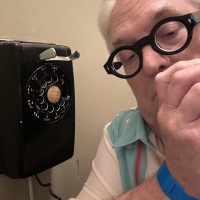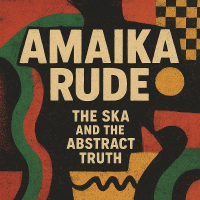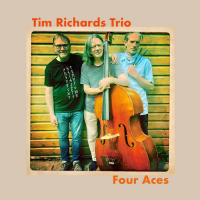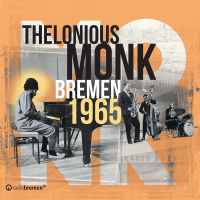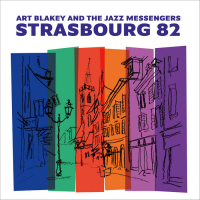Home » Jazz Articles » Multiple Reviews » Fantasy Jazz in 20-bit Glory: Red Garland, John Coltrane...
Fantasy Jazz in 20-bit Glory: Red Garland, John Coltrane, Thelonious Monk, Wes Montgomery
 Red Garland
Red Garland
Red Garland's Piano
Prestige 7086
Dallas Texas native Red Garland did not lead a recording session until August 17, 1956 when bassist Paul Chambers, drummer Art Taylor, and Garland entered Rudy Van Gelder's studio and recorded what would become A Garland of Red. Red Garland had just completed a year with Miles Davis and the trumpeter's first great quintet (Davis, pianist Garland, bassist Paul Chambers, drummer Philly Joe Jones, and saxophonist John Coltrane). Little more than five months later, the trio was back at Van Gelder's for a date that would become the first sides of Red Garland's Piano. The next time Garland entered a studio was to record the epochal Art Pepper Meets the Rhythm Section (Contemporary 3532, January 19, 1957). Red Garland's Piano was then completed March 22, 1957 at Van Gelder's Hackensack Studios. The disc is made up of nine standards, beginning with a sublime nine-plus minute setting of Percy Mayfield's "Please Send Me Someone to Love." Garland divides the remainder fo the recording between up-tempo pieces separated by ballads, bot of which he plays with his characteristic block chords and deft soloing. Several of the pieces are lifted directly from the Miles Davis Book ("If I Were a Bell," "But Not for Me"). Paul Chamber's bass is very easily heard, raised out of the mud of the original tapes. Art Taylor's splendid brush work has never be heard better.
 John Coltrane and the Red Garland Trio
John Coltrane and the Red Garland Trio
Traneing In
Prestige 7123
Using the same rhythm section as on Red Garland's Piano , John Coltrane records this date as a leader August 23, 1957. The sides recorded result in Traneing In. Coltrane recorded these sides during a year sabbatical he was taking from the Miles Davis Quintet. The recording was preceded by a trio session with Earl May on Bass and Taylor on drums recorded August 16, 1957 and itself preceded a Sonny Clark session recorded September 1, 1957. The highlight of the disc is certainly the 12-minute Coltrane blues, "Traning In." Red Garland performs with finger rolling abandon on the piece, soloing for a full three and one half minutes before Coltrane emerges to take charge. Coltrane's tone has never been pretty to this writer, but it has always been commanding. Chambers is afforded a lengthy pizzicato solo in the piece. Chambers introduces "Slow Dance" which shows the roots of Coltrane's ultimate conceptions to manifest on his Impulse recordings. Trane's own "Bass Blue" shows how firmly planted the saxophonist was in the Hard Bop tradition at the time of the recordings. Art Taylor's rim shots ring like pistol fire. Coltrane ends the recording with two ballads, "You Leave Me Breathless" and "Soft Lights and Sweet Music," illustrating that one did not need the buttery tone of Ben Webster to elicit the soul of balladry.
 Thelonious Monk
Thelonious Monk
Thelonious Himself
Riverside 235
Thelonious Monk was like a strange butterfly that flew over and through the Be Bop revolution. To virgin modern ears, Monk was always adding one wrong note to pepper all of his playing with an intelligent dissonance that somehow sounded right. Monk was well into his recording career when these solo sides were laid for Riverside Records. And technically, this collection is not exclusively Monk on piano as he is joined by bassist Wilbur Ware and John Coltrane on "Monk's Mood." No matter, this disc finds Monk in top form, carefully sketching out both originals and standards alike. "April in Paris" and "I Don't Stand A Ghost of a Chance" fractured and beautiful, show the great care with which the pianist approached and then claimed standards as his own. Monk demonstrates this more fully on his original blues, "Functional," where he becomes as organic as Robert Johnson. This same organicity can readily be heard in the 21:39 minutes of takes of Monk's epochal "'Round Midnight." The extended piece reveals much about Monk's recording process and would compare this to the 12 minute take of Sonny Boy Williamson's "Little Village" on Bummer Road but in a less argumentative and colorful manner. As for the single non-solo recording, "Monk's Mood" it is an interesting tidbit, a historic anomaly were all of the stars were aligned.
 Wes Montgomery
Wes Montgomery
The Wes Montgomery Trio: A Dynamic New Sound
Riverside 1156
This is the stuff that legends are made of. The 36-year-old Montgomery, shuffling from one job to the next in Indianapolis is heard by the Adderley Brothers and Gunther Schuller, who. in turn, publicize the guitarist. Montgomery ultimately signs with Riverside and comes to New York City to record with his Indianapolis trio members. Using a guitar and amplifier supplied by Kenny Burrell, Montgomery and his home boys record was this to be the first of many sides for Riverside. Montgomery waxes definitive versions of Monk's "'Round Midnight," Jerome Kern's "Yesterdays," and Ellington's "Satin Doll." Montgomery's own "Missile Blues" is covered in two takes on the disc as is "Satin Doll." At the same time, Montgomery accomplishes the previously impossible: to play and solo in octaves and block chords. He did this only because he was unaware a guitarist could not play this way, being self taught and performing in his Midwestern vacuum. This is the time to here the real Wes Montgomery, before Verve wasted his earthy sound with big bands and strings. Like John Coltrane, Wes Montgomery had a very short time in which to ply his trade. But, he made the most of his time and these are some of his finest recordings.
Visit Fantasy Records on the web at www.fantasyjazz.com .
Tags
PREVIOUS / NEXT
Support All About Jazz
 All About Jazz has been a pillar of jazz since 1995, championing it as an art form and, more importantly, supporting the musicians who make it. Our enduring commitment has made "AAJ" one of the most culturally important websites of its kind, read by hundreds of thousands of fans, musicians and industry figures every month.
All About Jazz has been a pillar of jazz since 1995, championing it as an art form and, more importantly, supporting the musicians who make it. Our enduring commitment has made "AAJ" one of the most culturally important websites of its kind, read by hundreds of thousands of fans, musicians and industry figures every month.

